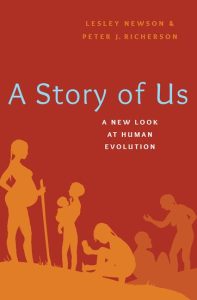Humans are a profoundly social creature. We share rich social qualities with many other species. Where we differ is in our ability to build upon cultural information in a cumulative manner, supported by complex forms of cooperation and language.
Studies of tool use show that humans have distinct abilities to think metaphorically, seek out and learn from the most skilled craftspeople, and produce innovations in technologies that are themselves evolutionary in nature. Research exploring early childhood development shows that we are avid social learners who “over-imitate” the actions of adult mentors, picking up functionally opaque actions and repeating them so that we behave like our instructors. We also possess cooperative norms and engage in complex ritual practices that need not have any obvious beneficial purpose. This allows us to form group identities and deepen emotional bonds with others in our communities. Cultural evolutionists study both human and animal cultures, and conduct comparative experiments and theoretical analyses to try to understand in which respects human cognition is unique and how our cultural capability evolved.
